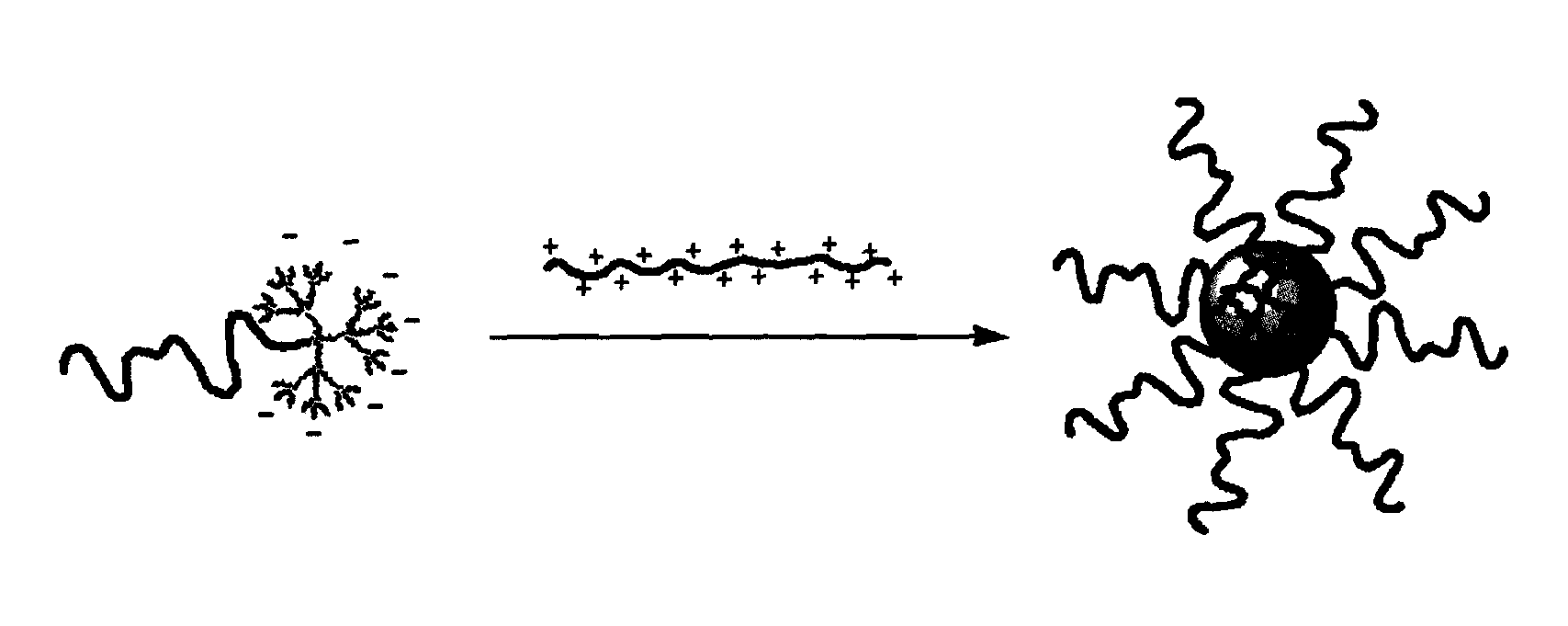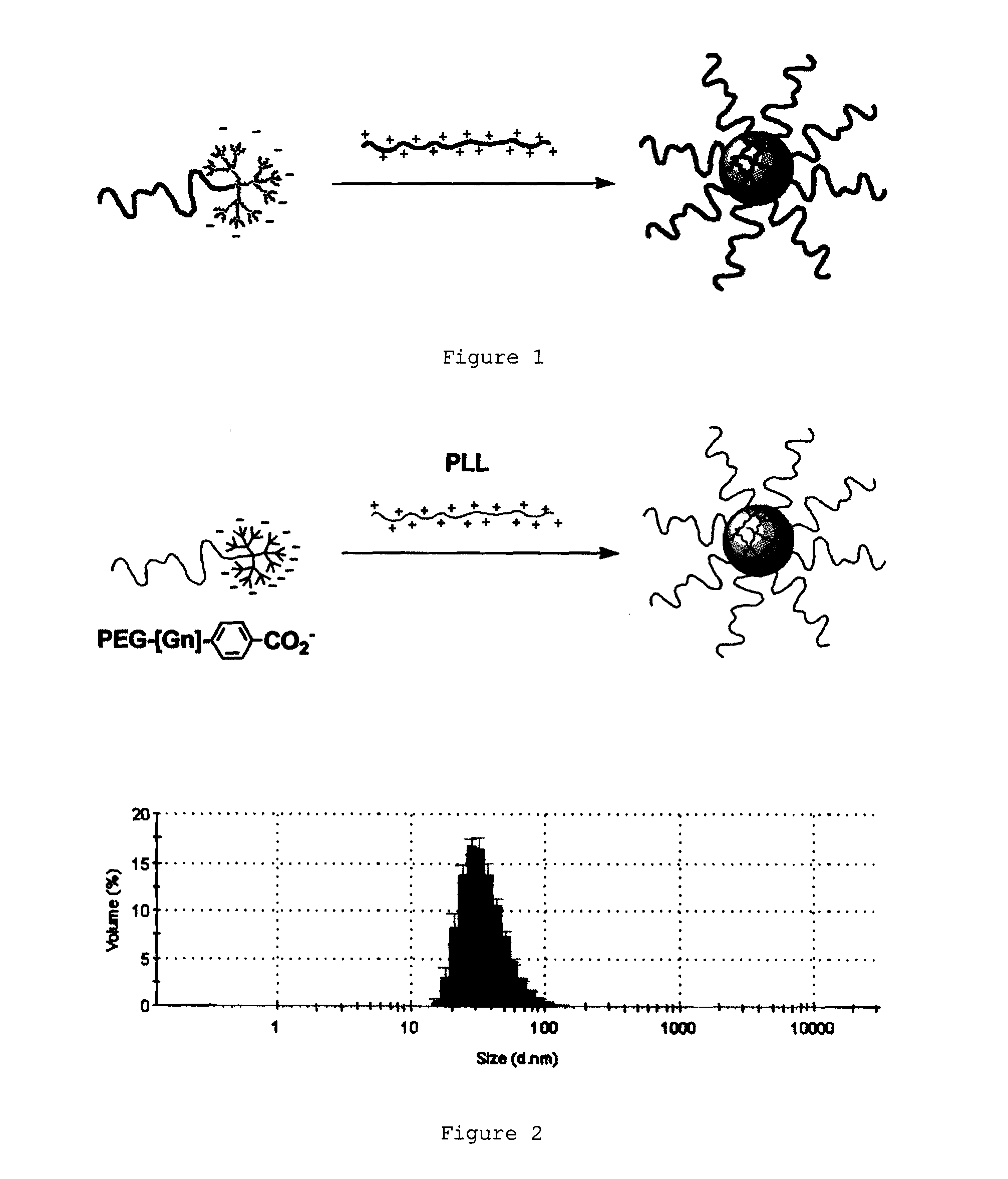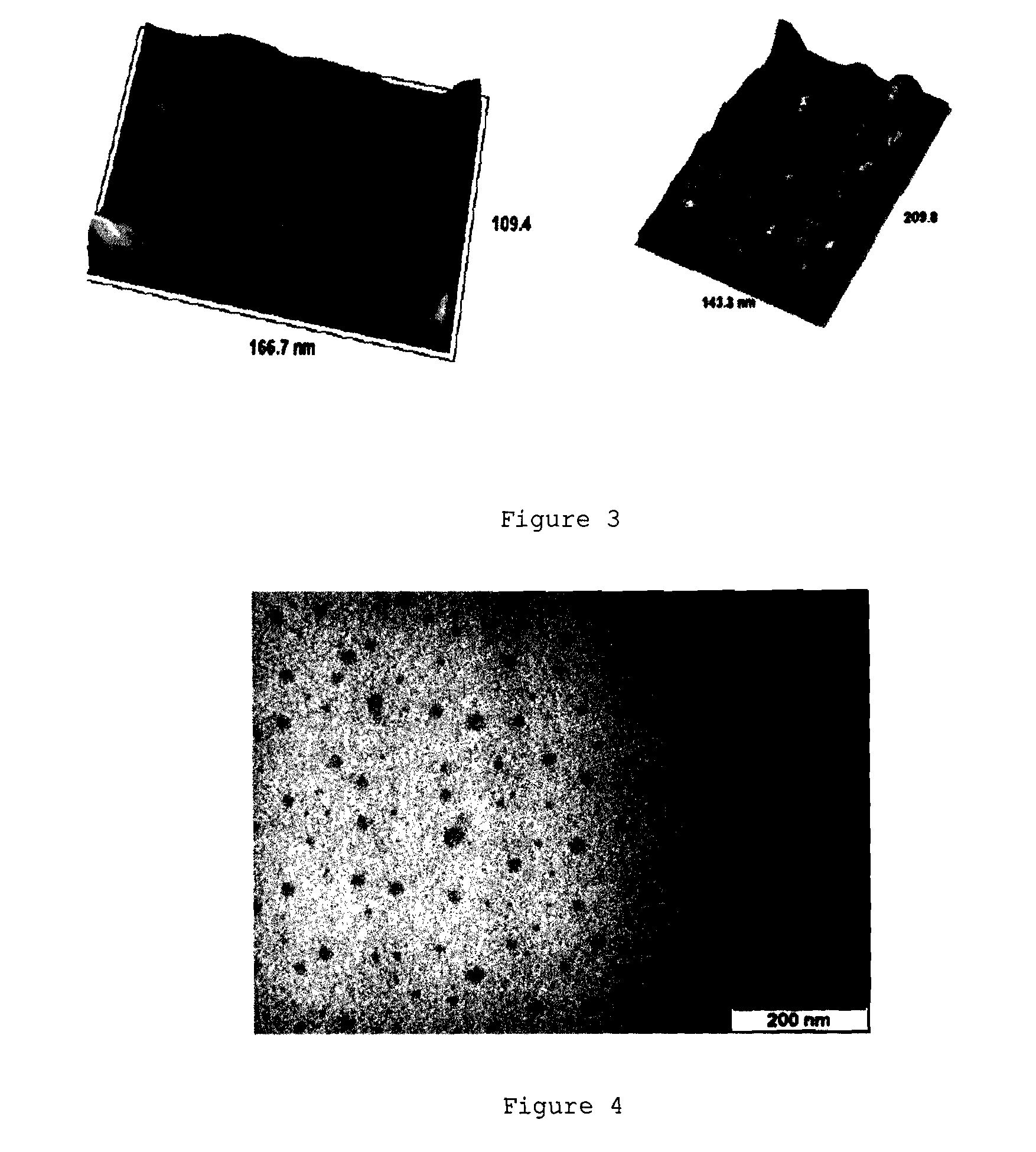Ph-sensitive dendritic polymeric micelles
a dendrite and polymer technology, applied in the field of ph-sensitive dendrite polymer micelles, to achieve the effect of facilitating the overall micelle preparation process, reducing the effort necessary, and simplifying the synthesis of dendrite constituents
- Summary
- Abstract
- Description
- Claims
- Application Information
AI Technical Summary
Benefits of technology
Problems solved by technology
Method used
Image
Examples
example 1
Synthesis of the Block Copolymers
[0045]The dendritic unit 2 was prepared starting from methyl gallate 1 as indicated in Scheme 1. The block copolymer of generation one PEG-[Gl]-N3 was obtained by coupling the dendritic unit 2 with a PEG-NH2 (3).
[0046]The block copolymers of higher generations are obtained by reducing the terminal azide groups of the previous generation by means of catalytic hydrogenation and coupling the resulting amines with the dendritic unit 2 as shown in Scheme 2.
example 2
General Process for Anionic Functionalization of the PEG-Dendrimer Block Copolymers, (PEG-[Gn]-N3)
[0047]The functionalization of the block copolymers with anionic groups was carried out by means of a Cu(I)-catalyzed azide-alkyne [3+2] cycloaddition reaction. To that end, it is necessary that the anionic ligands which are to be introduced are functionalized with terminal alkyne groups.
[0048]The PEG-dendrimer block copolymer PEG-[Gn]-N3 and the anionic ligand were dissolved in a t-BuOH—H2O mixture (1:1). Catalytic amounts of CuSO4 and sodium ascorbate were subsequently added (Scheme 3).
example 3
General Process for Cationic Functionalization of the PEG-Dendrimer Block Copolymers, (PEG-[Gn]-N3)
[0049]Two strategies can be followed to introduce cationic groups in the periphery of the block copolymer:[0050]1. The reduction of the terminal azides, for example by means of catalytic hydrogenation in acid medium, leads to ammonium salts of the corresponding primary amines in the periphery of the dendrimer. Scheme 4 shows how to obtain PEG-[G3]-NH3+.[0051]2. A Cu (I)-catalyzed azide-alkyne [3+2] cycloaddition reaction, as described in Scheme 3, but using cationic ligands functionalized with terminal alkynes.
PUM
| Property | Measurement | Unit |
|---|---|---|
| pKa | aaaaa | aaaaa |
| pKa | aaaaa | aaaaa |
| size | aaaaa | aaaaa |
Abstract
Description
Claims
Application Information
 Login to View More
Login to View More - R&D
- Intellectual Property
- Life Sciences
- Materials
- Tech Scout
- Unparalleled Data Quality
- Higher Quality Content
- 60% Fewer Hallucinations
Browse by: Latest US Patents, China's latest patents, Technical Efficacy Thesaurus, Application Domain, Technology Topic, Popular Technical Reports.
© 2025 PatSnap. All rights reserved.Legal|Privacy policy|Modern Slavery Act Transparency Statement|Sitemap|About US| Contact US: help@patsnap.com



